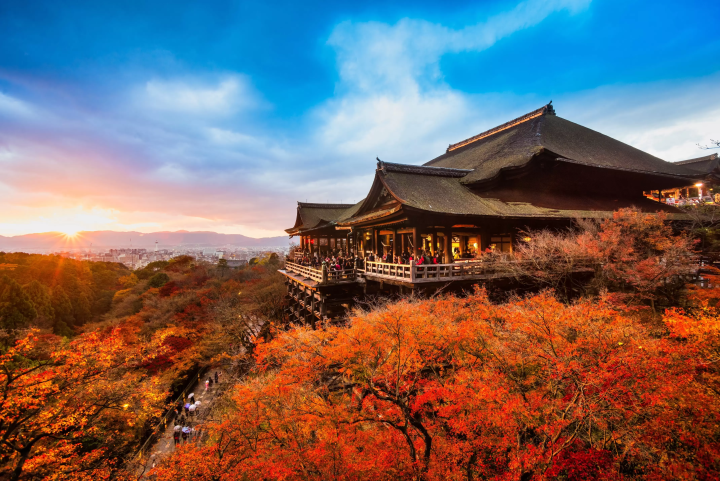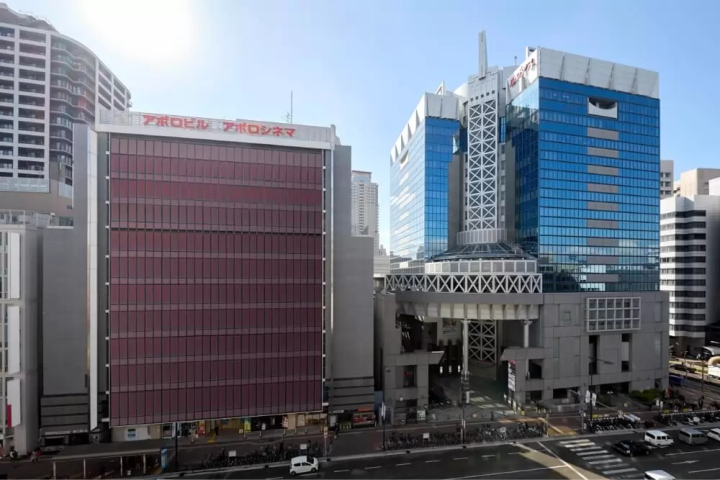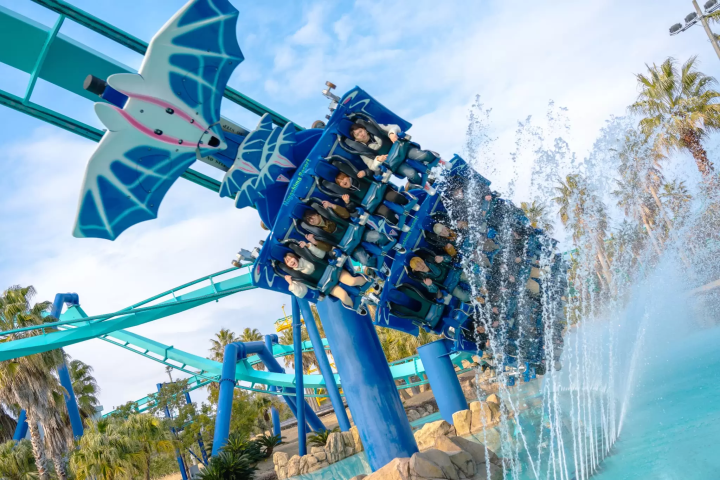[Shimanto City, Kochi Prefecture] You can only eat it in Shimanto City! ! "Salt seared bonito"
![[Shimanto City, Kochi Prefecture] You can only eat it in Shimanto City! ! "Salt seared bonito"](https://resources.matcha-jp.com/resize/720x2000/2023/12/10-156219.webp)
When you think of Kochi Prefecture's delicious food, it's famous nationwide, and the first thing that comes to mind is bonito tataki. Bonito is a well-known specialty of Kochi, but it is actually in season twice! This time, we will explain about bonito, which is loved by the people of Kochi Prefecture, its seasonal season, characteristics, and recommended ways to eat it that can only be enjoyed in Shimanto City.
-
Table of Contents
- Bonito season! First bonito and returning bonito
- “Nakamura traditional salt tataki” that can only be eaten in Nakamura
- Great with salt tataki! “Shimanto Bu Chuhai”
- “Forbidden fruit” grown in Shimanto Shimanto Bushukan
- Those who want to know more about Shimanto City!
Bonito season! First bonito and returning bonito
Bonito is a well-known specialty of Kochi, but its name changes depending on when it is caught (first season), such as " first bonito " or " return bonito " !
This time, we will introduce two types of bonito with different names, their seasonal seasons, characteristics, and recommended ways to eat them that are unique to Kochi.
![[Shimanto City, Kochi Prefecture] You can only eat it in Shimanto City! ! "Salt seared bonito"](https://resources.matcha-jp.com/resize/720x2000/2023/12/08-155844.webp)
First bonito with a light taste!
Hatsukatsuo, which has long been loved as one of the seasonal ingredients of spring, refers to the bonito that is landed at the beginning of the year because the word ``first'' is attached to it, but in recent years, it has been eaten from spring to early summer. It has come to refer to bonito that is landed.
Young bonito fish hatch from eggs and travel north on the Kuroshio current in search of food in the spring, where they grow into adults.
The bonito caught during this northern migration is called ``first bonito'' . It is also called ``upward bonito.'' It varies depending on where it is landed, but in Kochi, the season is mainly from spring to early summer (around March to May).
![[Shimanto City, Kochi Prefecture] You can only eat it in Shimanto City! ! "Salt seared bonito"](https://resources.matcha-jp.com/resize/720x2000/2023/12/08-155836.webp)
When the first bonito is in its prime, the flesh is mostly transparent and red, giving it a refreshing and plump flavor.
It has a firm texture and does not have the characteristic scent of bonito, making it easy to eat even for people who don't like it.
![[Shimanto City, Kochi Prefecture] You can only eat it in Shimanto City! ! "Salt seared bonito"](https://resources.matcha-jp.com/resize/720x2000/2023/12/08-155848.webp)
Hatsushi bonito has a light taste with little fat , so it is recommended to sear it so that you can eat it with the fatty skin. It's the season when ``Nakamura's traditional salt tataki'' is delicious, eaten with plenty of seasonings.
![[Shimanto City, Kochi Prefecture] You can only eat it in Shimanto City! ! "Salt seared bonito"](https://resources.matcha-jp.com/resize/720x2000/2023/12/08-155758.webp)
Returned bonito with rich flavor!
On the other hand, when the bonito head north in search of food and reach southern Hokkaido, the water temperature begins to drop, so they begin heading south (U-turn) in search of warmer waters.
The bonito caught during this southward migration is called ``returning bonito'' . In Kochi, the season is around autumn (September to November).
![[Shimanto City, Kochi Prefecture] You can only eat it in Shimanto City! ! "Salt seared bonito"](https://resources.matcha-jp.com/resize/720x2000/2023/12/08-155839.webp)
Returned bonito eats a lot of food and is then landed after growing large, so it has a lot of fat and is also called ``torokatsuo'' or ``fatty bonito.' ' It has been loved as an autumn ingredient since ancient times.
The meat of the grown bonito is deep red, and the skin near the skin is whitish with fat, giving it a rich and chewy taste.
![[Shimanto City, Kochi Prefecture] You can only eat it in Shimanto City! ! "Salt seared bonito"](https://resources.matcha-jp.com/resize/720x2000/2023/12/08-155849.webp)
Compared to the lighter-tasting hatsatsu bonito, returned bonito has a richer flavor, so it is recommended that you enjoy it as is as sashimi .
![[Shimanto City, Kochi Prefecture] You can only eat it in Shimanto City! ! "Salt seared bonito"](https://resources.matcha-jp.com/resize/720x2000/2023/12/08-155755.webp)
“Nakamura traditional salt tataki” that can only be eaten in Nakamura
When you think of Kochi prefecture's delicious food, it is famous nationwide, and the first thing that comes to mind is ``bonito tataki.'' It is said to be a unique food culture in Kochi Prefecture, where the food is pounded with salt and sauce.
![[Shimanto City, Kochi Prefecture] You can only eat it in Shimanto City! ! "Salt seared bonito"](https://resources.matcha-jp.com/resize/720x2000/2023/12/05-155118.webp)
However, although they are both in Kochi Prefecture, the way of eating ``shiotataki'' is very different between Kochi City in the center and Nakamura, Shimanto City in the southwestern region.
In the Kochi City area, it's as simple as just sprinkling salt, but in Nakamura, they're seared with their own special sauces, mainly salt, vinegar, and fruit juice, to blend the flavors. (↓Salt Tataki in Kochi City)
![[Shimanto City, Kochi Prefecture] You can only eat it in Shimanto City! ! "Salt seared bonito"](https://resources.matcha-jp.com/resize/720x2000/2023/12/08-155847.webp)
``Nakamura's traditional salt tataki'' is topped with so much condiments (onions, garlic, etc.) that the bonito is almost invisible. The many condiments not only look delicious but are also nutritionally good, making them an excellent health food .
![[Shimanto City, Kochi Prefecture] You can only eat it in Shimanto City! ! "Salt seared bonito"](https://resources.matcha-jp.com/resize/720x2000/2023/12/05-155119.webp)
Nakamura's traditional salt tataki, which can only be eaten in Shimanto City , has a unique food culture and history. Each restaurant uses its ingenuity and wisdom to offer delicious "salt tataki" .
![[Shimanto City, Kochi Prefecture] You can only eat it in Shimanto City! ! "Salt seared bonito"](https://resources.matcha-jp.com/resize/720x2000/2023/12/27-160089.webp)
![[Shimanto City, Kochi Prefecture] You can only eat it in Shimanto City! ! "Salt seared bonito"](https://resources.matcha-jp.com/resize/720x2000/2023/12/08-155875.webp)
Each store puts their own wisdom and ingenuity into making their ``salt tataki'', from the process of making the tataki to the way it's eaten, the seasonings, and the sauce. In Shimanto City, you can enjoy unique "salt tataki" as many shops as there are .
"Nakamura's traditional salt tataki" can only be eaten in Shimanto City. Would you like to try the salt-tataki ladder?
Click here for a restaurant where you can eat “Nakamura traditional salt tataki”
Great with salt tataki! “Shimanto Bu Chuhai”
A perfect match with ``Nakamura Traditional Salt Tataki'' is ``Shimanto Bu Chuhai,'' which uses the ``forbidden fruit'' Bushukan grown in Shimanto. It is served as one of the standard menu items at pubs in Shimanto City.
![[Shimanto City, Kochi Prefecture] You can only eat it in Shimanto City! ! "Salt seared bonito"](https://resources.matcha-jp.com/resize/720x2000/2023/12/08-155753.webp)
Super refreshing taste and aftertaste! It is characterized by a refreshing flavor and moderate bitterness .
Chuhai is popular among both men and women and goes well with meals. Once you drink it, you will definitely become addicted to it. Be sure to try “Shimanto Bu Chuhai” with salt tataki!
Click here for the shops where you can enjoy “Shimanto Bu Chuhai”
“Forbidden fruit” grown in Shimanto Shimanto Bushukan
Why is it a forbidden fruit?
Shimanto Bushukan is a member of Yuzu Yasudachi, but its reality is completely different.
It is truly a " forbidden fruit " that once you taste it , you will never be satisfied with any other vinegared mandarin oranges . Its biggest characteristics are its sharp , refreshing acidity and unique, elegant aroma .
![[Shimanto City, Kochi Prefecture] You can only eat it in Shimanto City! ! "Salt seared bonito"](https://resources.matcha-jp.com/resize/720x2000/2023/12/08-155756.webp)
With its elegant aroma and acidity , it perfectly enhances the deliciousness of all ingredients from the mountains, rivers, and sea.
![[Shimanto City, Kochi Prefecture] You can only eat it in Shimanto City! ! "Salt seared bonito"](https://resources.matcha-jp.com/resize/720x2000/2023/12/08-155853.webp)
![[Shimanto City, Kochi Prefecture] You can only eat it in Shimanto City! ! "Salt seared bonito"](https://resources.matcha-jp.com/resize/720x2000/2023/12/08-155855.webp)
It has been affectionately known as the ``King of Vinegar Mandarins'' by the people of Kochi Prefecture, who love vinegar mandarin oranges and live in the ``Vinegar Mandarin Kingdom.''
Bushukan is not only delicious, but also has a very strong vitality, and once it begins to bear fruit, it will bear fruit profusely from late August to early October every year without much care.
![[Shimanto City, Kochi Prefecture] You can only eat it in Shimanto City! ! "Salt seared bonito"](https://resources.matcha-jp.com/resize/720x2000/2023/12/08-155860.webp)
Citrus trees are only a few decades old, but Bushukan trees continue to bear fruit for over 100 years .
![[Shimanto City, Kochi Prefecture] You can only eat it in Shimanto City! ! "Salt seared bonito"](https://resources.matcha-jp.com/resize/720x2000/2023/12/08-155757.webp)
Bushukan is also ``safe and secure'' as it is resistant to diseases and insects and grows well without relying on pesticides.
Why not come and taste the rare Nabushukan that grows only in Shimanto City and is not available nationwide?
Those who want to know more about Shimanto City!
The Shimanto City Tourism Association also rents bicycles!
Also, please feel free to contact us if you have any questions about sightseeing in Shimanto City or if you would like to receive a pamphlet.
![[Shimanto City, Kochi Prefecture] You can only eat it in Shimanto City! ! "Salt seared bonito"](https://resources.matcha-jp.com/resize/720x2000/2024/03/05-170125.webp)
Article created by Shimanto City Tourism Association
The Hata region of Kochi Prefecture is located at the southwestern tip of Shikoku, and is a peninsula that juts out into the Pacific Ocean, facing Tosa Bay to the east and Bungo Channel to the west. It is made up of three cities, two towns, and one village: Hara Village. It is a natural powerhouse rich in blessings, including the nationally famous Shimanto River and Cape Ashizuri, the blessings of the Kuroshio Current that flows along the coast, and the blessings of mountains that boast the largest area of forests in the country.
The contents on this page may partially contain automatic translation.





























![[Next event confirmed! / Report] “Let’s Eat Tokyo Food”](https://resources.matcha-jp.com/resize/720x2000/2025/12/26-254125.webp)
![[Kanazawa] Enjoy the world of gold leaf to the fullest in the city with the highest production volume in Japan](https://resources.matcha-jp.com/resize/720x2000/2025/11/12-249564.webp)